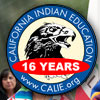 |
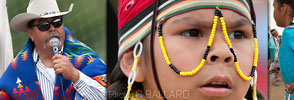 |
 |
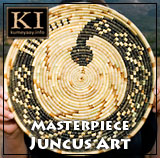
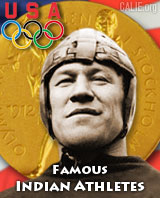
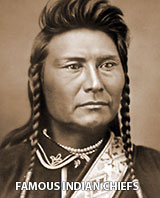
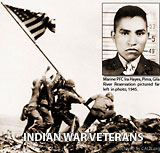
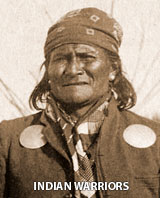
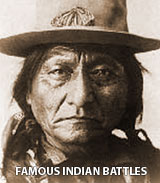
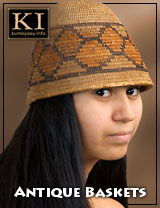

Publishing Corner: Indian Community: Science & Wonder Indian Heros: California Indian Art: CALIE Library: Academic Financial Aid: Tribal Governments: Indian Gaming: |

Dr. Katherine Siva Saubel
Native American Scholar, Cahuilla Historian Katherine Siva Saubel Dies at 91
by Guy McCarthy, Banning-Beaumont Patch, November 2, 2011 Known as one of California's foremost Native American leaders and educators, Dr. Saubel died Tuesday peacefully at her home on the Morongo Indian Reservation, her nephew Kevin Siva said. Katherine Siva Saubel, a Native American scholar, Cahuilla historian, co-founder of the Malki Museum, and one California's most respected tribal elders, died Tuesday at her home on the Morongo Indian Reservation, her nephew and caregiver said Wednesday. "It is windy today, because the wind is looking for her," Kevin Siva, a lifelong resident of the Morongo Reservation, said in a phone interview. "She always told me stories about the wind when I was younger." Saubel died Tuesday at home in bed, "very peacefully," said Siva, who has been his aunt's caregiver for the past 15 years. Saubel was born in March 1920 in her village Pachaval in northern San Diego County, Siva said. She came to the Morongo Reservation when she was 18 years old, and she had lived there 73 years, Siva said. Saubel was a widow, and her husband was Mariano Saubel, Siva said. She is survived by one son, Allen Saubel, of Florida, three grandsons, Aaron, Allen and Steven, a granddaughter, Maria, and numerous nieces and nephews, Siva said. Saubel earned a PhD during her studies and she was a doctor of philosophy, Siva said.
Tribal Council Chairman Robert Martin of the Morongo Band of Mission Indians expressed his tribe's condolences and grief. "Dr. Saubel was truly remarkable, both as a leader and as a fierce defender of Native American culture, from the preservation of the traditional Cahuilla language to the protection of sacred sites," Martin said in a statement released Wednesday evening. "As an author, a leader, an academic and an activist, she displayed astonishing skill, courage and compassion as she worked tirelessly to preserve Native American culture and reignite interest in our rich heritage among the public and our tribal youth," Martin said. "We will miss her wit and her wisdom, her ability to inspire others through hard work and laughter, and her enduring commitment to our cultural and spiritual beliefs," Martin said. According to a biography on the Malki Museum web site, Saubel was born Katherine Siva to Cahuilla speaking parents at Pachawal Pa, the upper village of the Los Coyotes Indian Reservation. She spent the first years of her life in the mountains above Warner Springs, where only Cahuilla was spoken, according to the Malki Museum. She had 11 siblings in her immediate family - six boys and five girls - and she was the eighth. At the time, the Los Coyotes Reservation was more isolated than it is today, and its isolation was a factor in Saubel's "superb command of her native tongue and for her profound understanding of Cahuilla culture," according to the Malki Museum. Although she lived more than 90 years in an English-dominated world, she was "a dominant native speaker of her dialect of Cahuilla known as 'Mountain Cahuilla,'" and the Cahuilla culture was very much alive in her heart, according to the Malki Museum. Back in the 1920s, Saubel's father took advice from a Cahuilla shaman and moved his family out of Los Coyotes to a warmer part of the Cahuilla territory, settling on the land of her mother's uncle, Pedro Chino, at the Agua Caliente Reservation in Palm Springs, according to the Malki Museum. There she learned to speak the "Pass Cahuilla" dialect, even though it is the dialect of Cahuilla most divergent from Mountain Cahuilla. Around this time in the mid-1920s, she entered the segregated elementary school in Palm Springs, where "she acquired English by the time honored sink-or-swim pedagogical method," according to the Malki Museum. "She initially spoke not one word of English, but she learned by observing and figuring out what was being said. No one taught her; she was just put in the back of the classroom and ignored, but she still learned." She was a tomboy, often playing and rough-housing with her brothers — running, climbing trees, and making mischief. Her grandmother once made her some dolls to play with, and sat to play with her. But she did not like it, and upset her grandmother by throwing the dolls up in a tree so she could climb up into the tree, according to the Malki Museum. After she finished primary school, she wanted to go to high school, but at the time there was not one in Palm Springs. So she had to take a bus with white students to Banning. She was athletic and enjoyed sports like softball and archery, according to the Malki Museum. She was the best archer in the otherwise all-male class. Halfway through high school, the Palm Springs high school was finished, so she transferred and was the first Native American woman to graduate from there, according to the Malki Museum. As a very young woman, she began to realize the imminent loss of Native American culture and knowledge, which had been passed down through generations. During her high school years, she kept a notebook describing all of the familiar native plants and their uses as foods, tools, and medicines, according to the Malki Museum. Her family was able to survive well during the Great Depression of the 1930s by going back to their traditional ways of hunting and gathering. They never went hungry, and she learned from her mother, who was a great cook, gatherer, and medicine woman, according to the Malki Museum. "Her mother instilled in her the idea that you must take care of the earth because it takes care of you, and if you destroy it you are destroying yourself," according to the Malki Museum. She was never afraid to stand up for her people and their rights. During high school she had to wait at a bus stop on the reservation in front of a small restaurant that had a sign in the window saying "Whites Only." When she noticed the sign, she went into the restaurant and told the owner to take it down because his restaurant was on reservation land and he had no right to keep Indians out of a restaurant on their own land, according to the Malki Museum. The owner didn't say a word when she told him this - she thought he was shocked to have an Indian teenage girl confront him - but later when she walked by the restaurant the sign had been taken down. When she was 18, she met Wanikik Cahuilla Mariano Saubel at a Cahuilla ceremonial gathering, on the Palm Springs Reservation. In 1940, at the age of 20, she married Mariano Saubel, who lived at the Morongo Reservation near Banning, where both Mountain and Pass Cahuilla were spoken, as well as the distantly related Serrano language, according to the Malki Museum. Mariano and Katherine Saubel were married for forty-five years, until Mariano Saubel passed away in 1985. Allen was their only son, but they also helped raise his four children, as well as nieces and nephews. Mariano was supportive of Katherine's work to preserve Cahuilla and other Native cultures, and worked with her to found and build the Malki Museum. In 1958, Saubel was introduced to Lowell Bean, who was then a student of ethnology and anthropology at UCLA. This began a 40-year collaboration on Cahuilla culture. Bean introduced her to Dr. William Bright, Professor of Linguistics and Anthropology at UCLA. Her life began to change — her formal education had begun, according to the Malki Museum. The Kennedy Scholarship for Native Americans in 1962 allowed her to travel to the University of Chicago and the University of Colorado at Boulder, where she studied the fundamentals of anethnology, anthropology, and linguistics. She then began giving seminars and study groups at UCLA, under the direction of Bright. Together, Bean and Saubel in 1972 authored Temalpakh, a work detailing the ethnobotanical knowledge of the Cahuilla, with much of the information coming from Saubel’s mother, who was a Cahuilla medicine woman. Katherine Siva Saubel has since become known internationally as a Native American scholar, and appears in the biographical Reference Encyclopedia of the American Indian, 1967, and many other biographical reference works, according to the Malki Museum. She has worked with other anthropologists and linguists, including German linguist Hansjakob Seiler, who with her assistance published two studies of the Cahuilla language. She also worked with Japanese linguist Dr. Kojiro Hioki, from the Hachinohe University. Drs. Seiler and Hioki worked together with her to publish an updated book on the Cahuilla language in 2006. She also worked with linguist Eric Elliott for several years, and together they published a two-volume work with cultural memories and stories in Mountain Cahuilla and English, I'sill He'qwas Wa'xish: A Dried Coyote's Tail. Saubel's life accomplishments include co-founding the Malki Museum in 1964, according to the museum. The Malki Museum opened in February 1965. STUDY-RESEARCH WEB PORTALS:
Please see Dr. Siva-Saubel's MALKI MUSEUM BIOGRAPHY for more information. WIKIPEDIA: Katherine Siva Saubel +++++++ To submit memorials, corrections, photos, additional information, please CONTACT CALIE WEBMASTER. |
CALIF INDIAN EDU NETWORK: AHMIUM.org | SDICENTER.org | APAPAS.com
—
WEB SITE DESIGN
www.calie.org COPYRIGHT 2008-Present • ALL RIGHTS RESERVED



